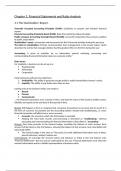Summary
Financial Management 2 Full Summary
- Course
- Institution
Financial Management 2 for the Hva/Amsterdam University of Applied Science. Entire 39 page summary with ALL relevant information. This summary can be a replacement of the book. I got a 9.7 for the exam.
[Show more]



